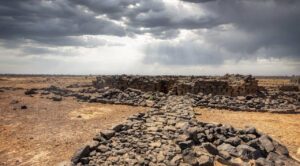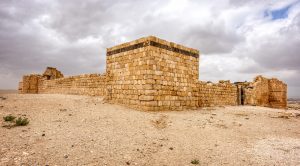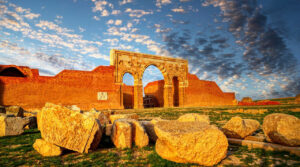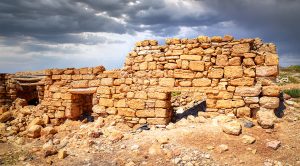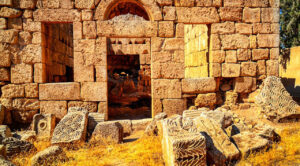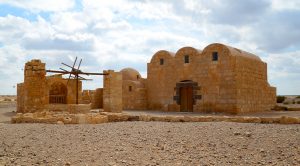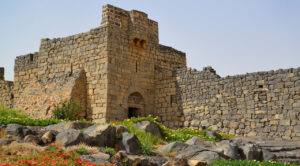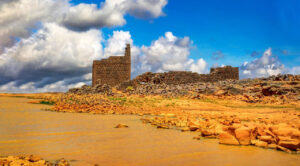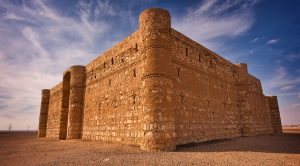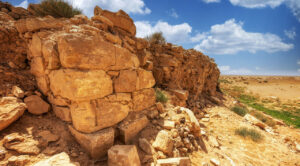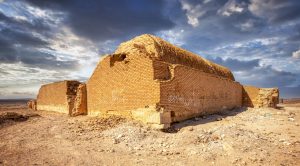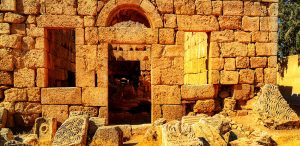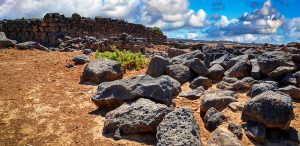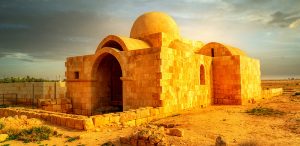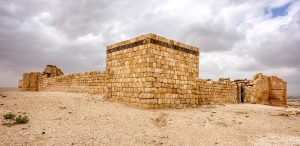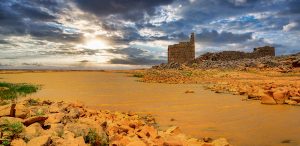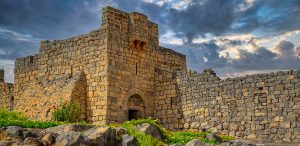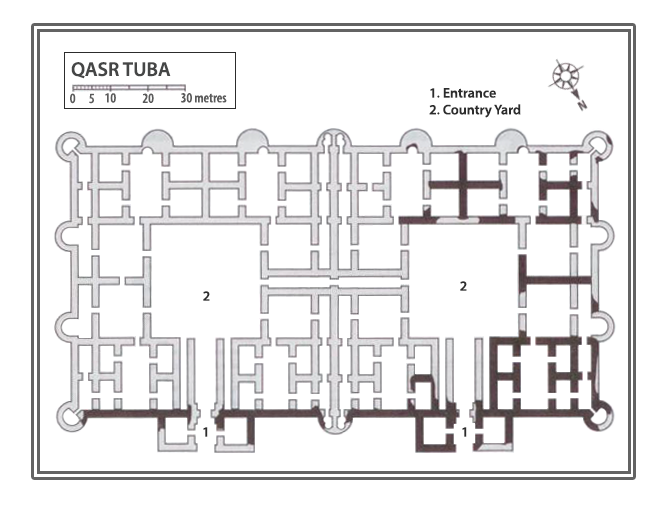The only Desert Castle that still lives up to its billing as a vast, carefully crafted, remote, fortified palace is Qasr Tuba, which can only be reached with a four-wheel-drive vehicle and a guide. Several desert tracks lead here – from south of Azraq, from Qasr Kharana and Qatrana. The effort is worth the drive – if one is romantic enough to relish a glimpse of eighth-century princely life in a desert.
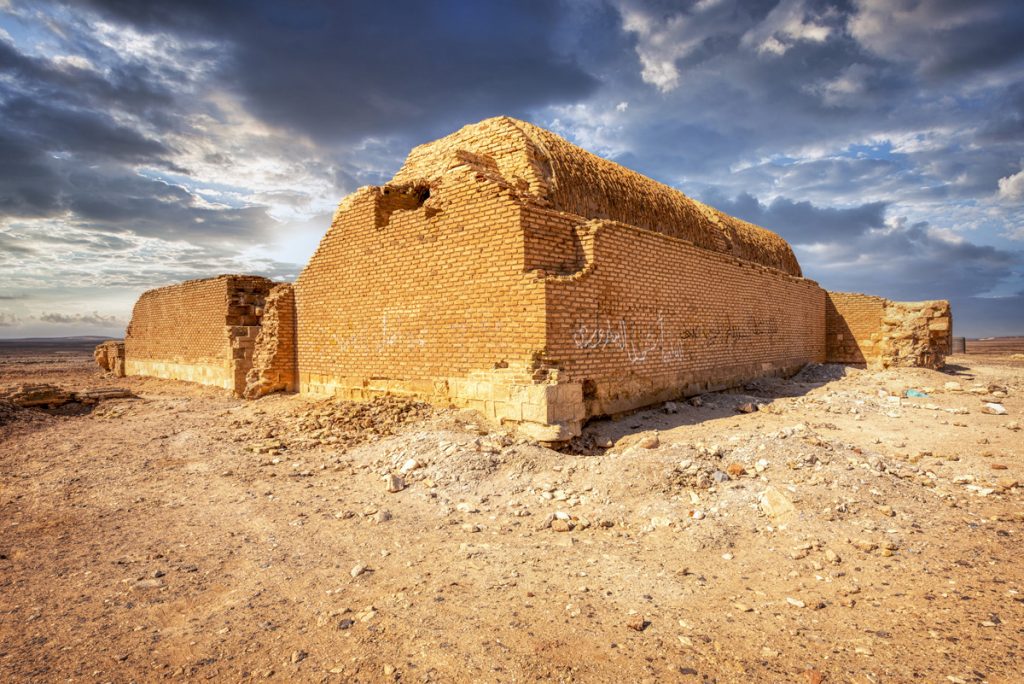
Qasr Tuba, built in the time of Caliph al-Walid 11(743-44), is defined by a rectangular enclosure measuring 140 by 73 meters, interrupted by semi-circular towers. It was designed as two identical, 70-meter square complexes joined by a corridor, though only one was finished. A gate connects these two buildings through a passageway, which is centrally positioned on the wall that they share.
Each complex is flanked by two very small, protruding square rooms, two main entrances are located at the centre of each enclosure’s northern facade. A total of fourteen semicircular towers at equal intervals buttress the structure’s stone exterior, including four at the outer corners and two at the joining corners of the buildings.
Upon entering, a long hallway opens into a courtyard surrounded by suites of rooms (bayts). In decoration, design, and material, Qasr Tuba is reminiscent of Qasr Al-Mushatta. It is speculated that they were built at the same time. Both palaces feature masonry exteriors with brick interior work, with the construction of some doorways replicating each other perfectly and both including pointed brick vaults. In addition, latrines are found in towers at both sites and the decoration on the doorposts and lintels at Qasr Tuba mimic Al-Mushatta. Neither was completed.
North of Qasr Tuba, alongside the dry riverbed, is the palace’s ancient water supply – three massive wells built of stone, with adjacent plastered pools and round structures designed for use by the animals that powered the water-lifting devices.
Despite its seemingly remote location, the castle was probably going to be a caravanserai, which would have served as a vital staging post on the Incense Route between Syria and Arabia.
Along with Qasr Burqu, Tuba is one of my favourite ancient ruins to visit in Jordan and I certainly recommend including it in your travel plan.
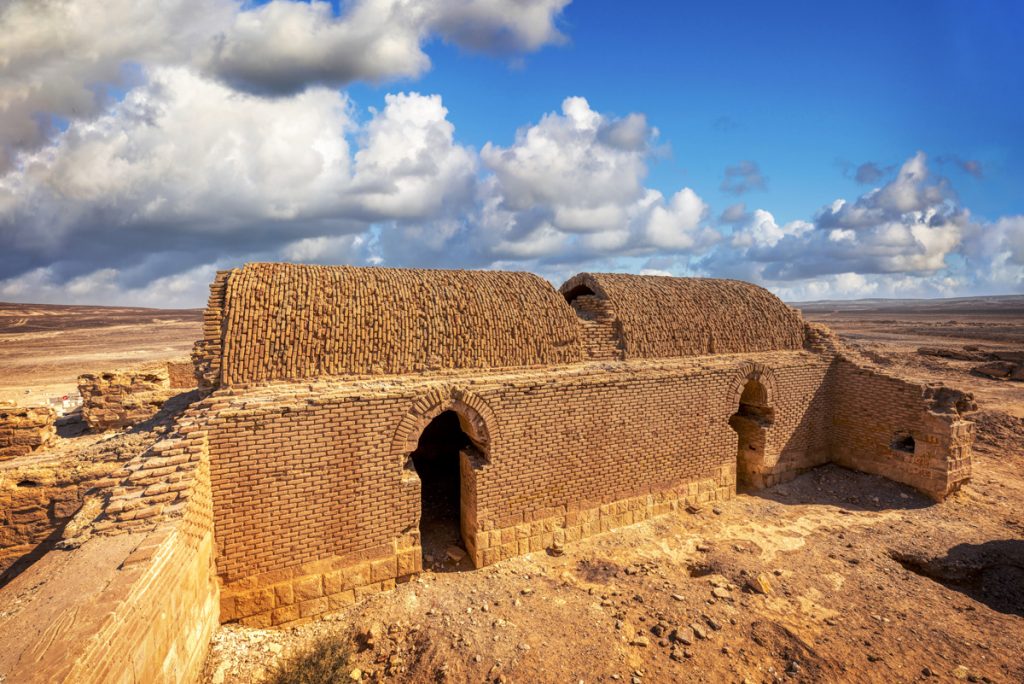
Like the other desert castles, Qasr Tuba was built during the Umayyad Caliphate. The site was brought to art historical attention after it was visited in 1896 by the Czech explorer Alois Musil.
In1896 Alois Musil was cold by the bedouin of Madaba of some old palaces in the desert, adorned with columns, paintings and inscriptions. On his return two years later, he found Qasr Tuba, the largest and most remote of a group of desert residences built in the early 8th century under the auspices of the Umayyad caliphs. Called Qasr (palace) in Arabic and castle in English, they are neither, all are enchanting examples of early Islamic architecture, individual in style and materials; and all had an agricultural base.
The Umayyad caliphs and their governors doubtless relished an escape from Damascus to the unconfining desert, where they could hawk and hunt and race their Arab horses. But a more serious purpose underlay these buildings – they provided meeting places for contacts with the bedouin tribes of the desert, on whose support they depended.
Musil found some fine stone carvings but these have disappeared, apart from one lintel now in the Amman Archaeological Museum.

